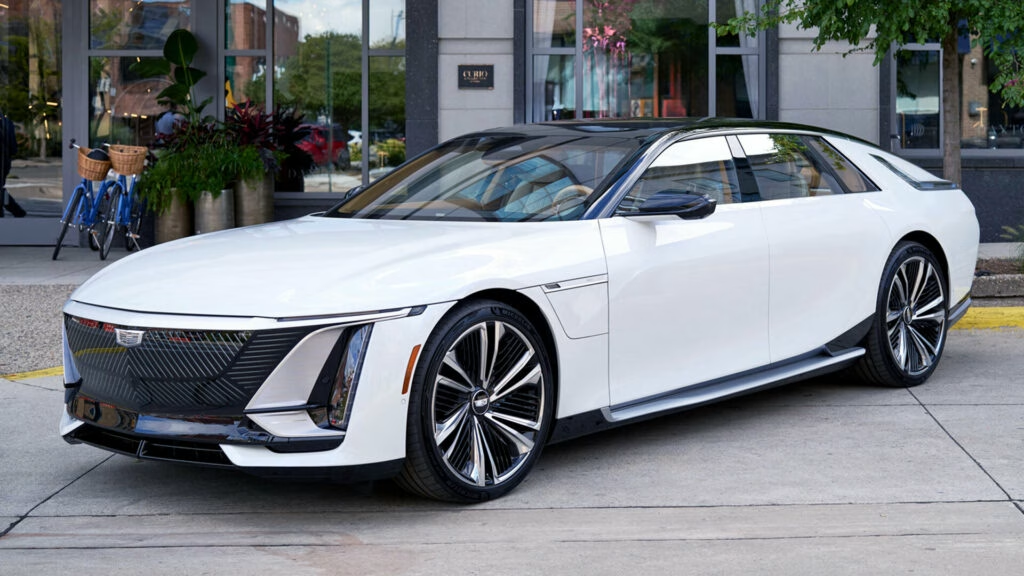What Makes the Cadillac Celestiq Stand Out in the Ultra-Luxury EV Market?
When it comes to electric vehicles, Cadillac’s Celestiq isn’t just another entry—it’s a statement piece. The latest delivery, handed over to Michigan hotelier Mark Mitchell, wasn’t your typical dealership affair. Picture this: a private ceremony at The Daxton Hotel, with GM President Mark Reuss personally signing the car. That’s the kind of bespoke attention you’d expect from a brand aiming to redefine American luxury.
But what really sets the Celestiq apart? For starters, its specs are nothing short of jaw-dropping. Dual-motor all-wheel drive, 655 horsepower, and a whopping 646 lb-ft of torque. The 111 kWh battery offers an estimated 303 miles of range, which, for a car tipping the scales in both size and opulence, is impressive. The interior? Mitchell’s Siku Tricoat model features a Camelia and Sheer Gray palette that looks more at home in a penthouse than a garage.
Cadillac’s approach here is clear: the Celestiq isn’t just about electrification—it’s about creating an experience. That’s echoed in Mitchell’s own words: the car “completely surpassed my expectations.” And that’s coming from someone who owns the hotel where the delivery took place.
How Has Cadillac’s EV Push Changed the Brand’s Trajectory?
Rewind to 2015, and Cadillac was in a very different place. The product lineup was solid, but not spectacular. Incentives were high, and the brand was struggling to capture the imagination of luxury buyers. Fast forward to today, and roughly 25% of Cadillac’s sales are now electric vehicles—a figure that would’ve sounded ambitious just a few years ago.
This shift didn’t happen by accident. Cadillac made a massive investment in its future, launching a wave of new EVs: the Optiq, Lyriq, Vistiq, Escalade IQ, and of course, the Celestiq. While the initial plan was to go all-electric, the brand has since pivoted to a more balanced approach. Still, the results are telling. According to Cadillac, more than 70% of Optiq, Lyriq, and Vistiq buyers are new to the brand. That’s a staggering conquest rate, and it signals that Cadillac’s EVs are resonating with folks who might’ve otherwise looked to European rivals.
What’s Next for Cadillac’s Gas-Powered Lineup?
Despite the EV momentum, the majority of Cadillac’s sales still come from internal combustion engine (ICE) vehicles. That’s both a challenge and an opportunity. The XT4 and XT6 are on their way out, and the XT5—while a steady seller—is starting to show its age.
Cadillac isn’t ignoring this. Dealers have already been briefed on the next-generation XT5, set to arrive in the second half of 2027. The new model is expected to draw inspiration from its Chinese counterpart, but with a distinctly American twist: production in Tennessee and a rumored turbocharged 2.5-liter four-cylinder engine delivering 328 horsepower. That’s a healthy bump and should keep the XT5 competitive in a crowded segment.
Why Are So Many New Buyers Choosing Cadillac EVs?
One of the most interesting trends is Cadillac’s ability to attract new customers with its electric lineup. More than 70% of buyers for the Optiq, Lyriq, and Vistiq are first-timers to the brand. That’s not just a win—it’s a transformation.
What’s driving this? For one, Cadillac’s EVs offer a distinct blend of style, tech, and luxury that stands out in a market often dominated by minimalist interiors and understated design. The Celestiq, for example, is unabashedly bold—inside and out. Meanwhile, models like the Lyriq and Vistiq hit the sweet spot for buyers who want something fresh but still practical.
The data backs this up. According to industry analysts, luxury EV buyers are increasingly looking for vehicles that feel special, not just efficient. Cadillac’s focus on craftsmanship, personalization, and technology is paying off.
How Does Cadillac Balance EV Ambitions With Traditional Models?
Cadillac’s journey hasn’t been without its pivots. The original plan to go all-electric has softened, reflecting broader market realities. While EV adoption is growing, many buyers—especially in North America—still want the option of a well-appointed gasoline SUV.
The brand’s solution? A dual-track strategy. Continue pushing the envelope with flagship EVs like the Celestiq, while also refreshing core models like the XT5 to keep traditional buyers engaged. It’s a smart play, especially as the luxury market remains in flux.
What Should Buyers Expect From Cadillac in the Next Few Years?
Looking ahead, Cadillac’s lineup will be more diverse than ever. Expect continued innovation on the EV front, with models like the Escalade IQ and future iterations of the Celestiq leading the charge. At the same time, the next-gen XT5 will ensure that Cadillac remains relevant for buyers who aren’t quite ready to plug in.
The big takeaway? Cadillac’s resurgence isn’t about perfection—it’s about smarter adjustments. Start with one change this week, and you’ll likely spot the difference by month’s end. Whether you’re eyeing an EV or sticking with a classic, Cadillac’s new direction is all about giving you more reasons to take a second look.

